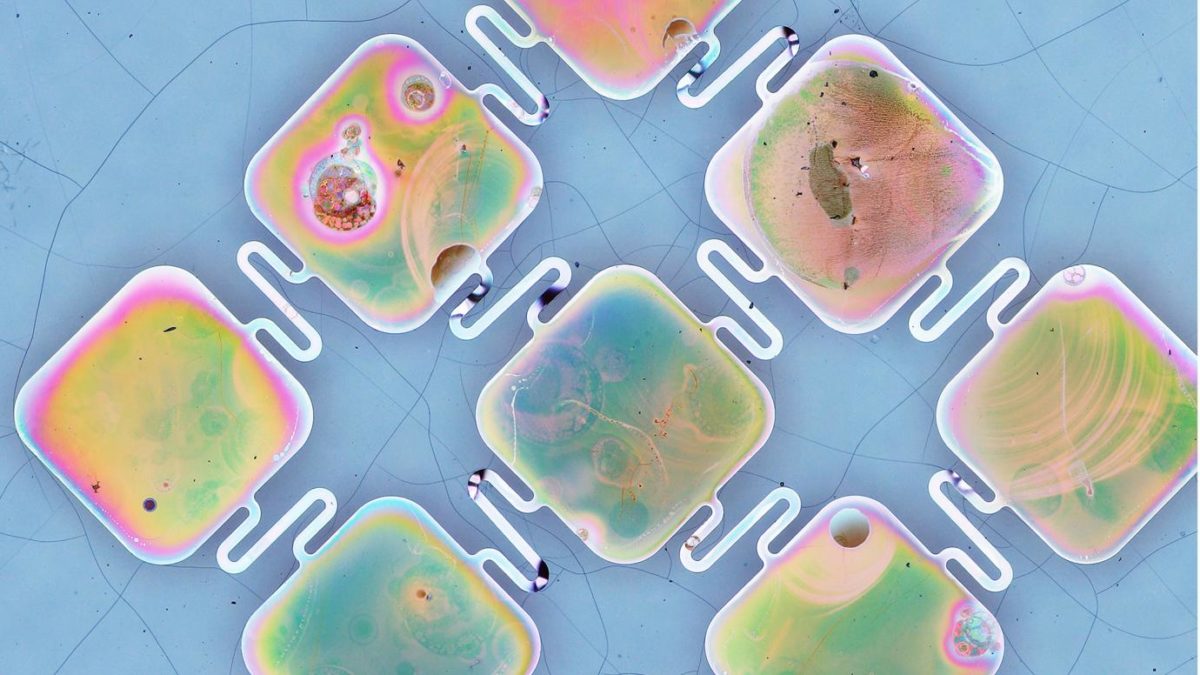Scientists at the University of Chicago discovered a new way to make solar cells that could be paired with a small light source to power pacemakers and other medical devices.
Aleksander Prominski, the first author of the paper published in Nature Materials, is a member of the lab of University of Chicago chemist Bozhi Tian, which specializes in creating ways to connect biological tissue and artificial materials such as wires to modulate brain signals and surfaces for medical implants. In this study, the researchers discovered a new way of making a single-layer solar cell and etching holes in the top layer to make it porous.
Solar cells are usually made of two layers, usually a combination of silicon with another material, but the University of Chicago team found they could create a solar cell out of pure silicon if they made one layer porous. The result is a soft, spongy solar cell that can be less than five microns across. The porous cell has multiple advantages over the ways that traditional solar cells are manufactured, streamlining the production process while maintaining the efficacy of the final product.
“You can make them in a matter of minutes, and the process doesn’t require high temperatures or toxic gases,” said Prominski.
“When we measured them, we saw the photocurrent was really high—two orders of magnitude higher than our previous designs,” added Jiuyun Shi, study co-author.
One of the areas that the researchers are interested in is making devices that can be powered by light. When operating in the body, such devices are known as photoelectrochemical cells and can be powered from a tiny optical fiber implanted in the body. The solar cell that the team developed can be paired with an optical fiber, which can be made as thin as a strand of human hair, significantly reducing the overall size of an implant.
The possibilities for medical procedures include pacemakers for the heart as well as applications for nerve stimulation. All of the components can be biodegradable, which would make them applicable to short-term procedures, such as correcting heart arrhythmias. The unique design could also be applied in renewable energy. Because the cells work best in a liquid environment, the researchers envision that they could be used in applications such as artificial leaves and solar fuels. environment, UChicago scientists think they could be used in applications such as artificial leaves and solar fuels.
The team is working with cardiac researchers at the University of Chicago Medicine to further develop the technology for eventual use in humans. They are also collaborating with the University of Chicago Polsky Center for Entrepreneurship and Innovation to commercialize the discovery.
This content is protected by copyright and may not be reused. If you want to cooperate with us and would like to reuse some of our content, please contact: editors@pv-magazine.com.









By submitting this form you agree to pv magazine using your data for the purposes of publishing your comment.
Your personal data will only be disclosed or otherwise transmitted to third parties for the purposes of spam filtering or if this is necessary for technical maintenance of the website. Any other transfer to third parties will not take place unless this is justified on the basis of applicable data protection regulations or if pv magazine is legally obliged to do so.
You may revoke this consent at any time with effect for the future, in which case your personal data will be deleted immediately. Otherwise, your data will be deleted if pv magazine has processed your request or the purpose of data storage is fulfilled.
Further information on data privacy can be found in our Data Protection Policy.